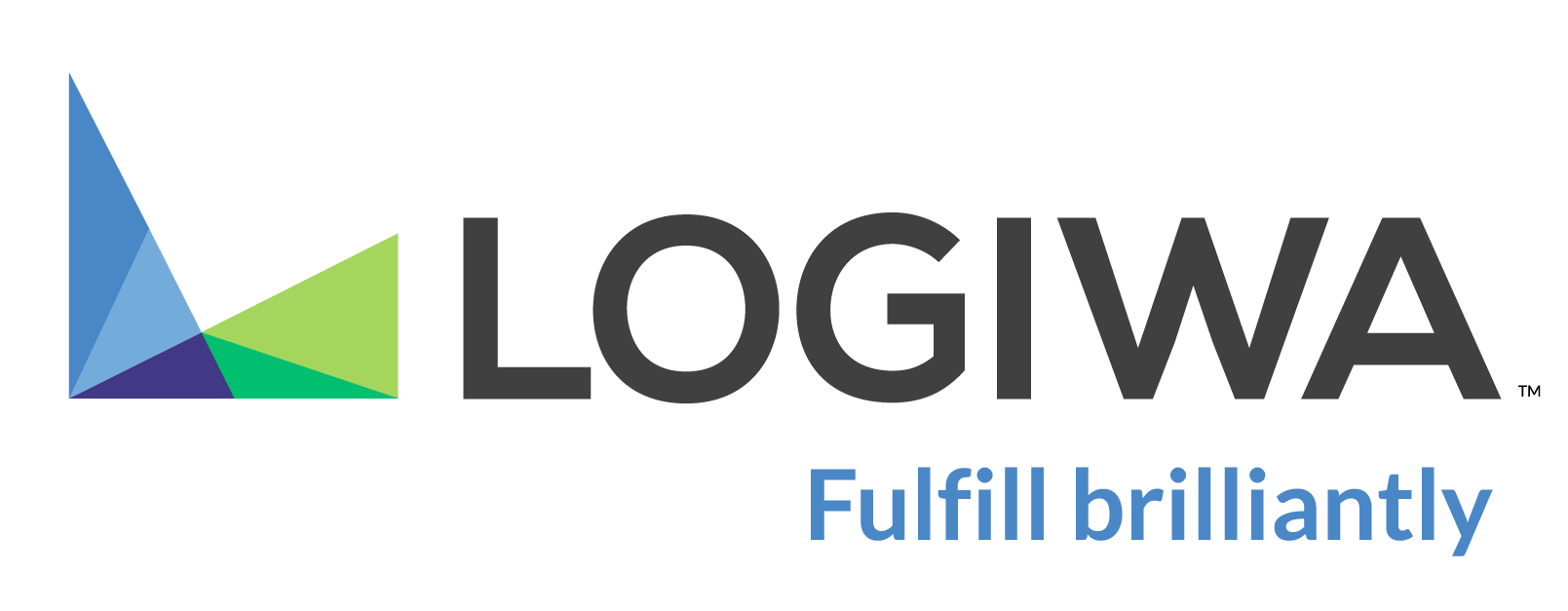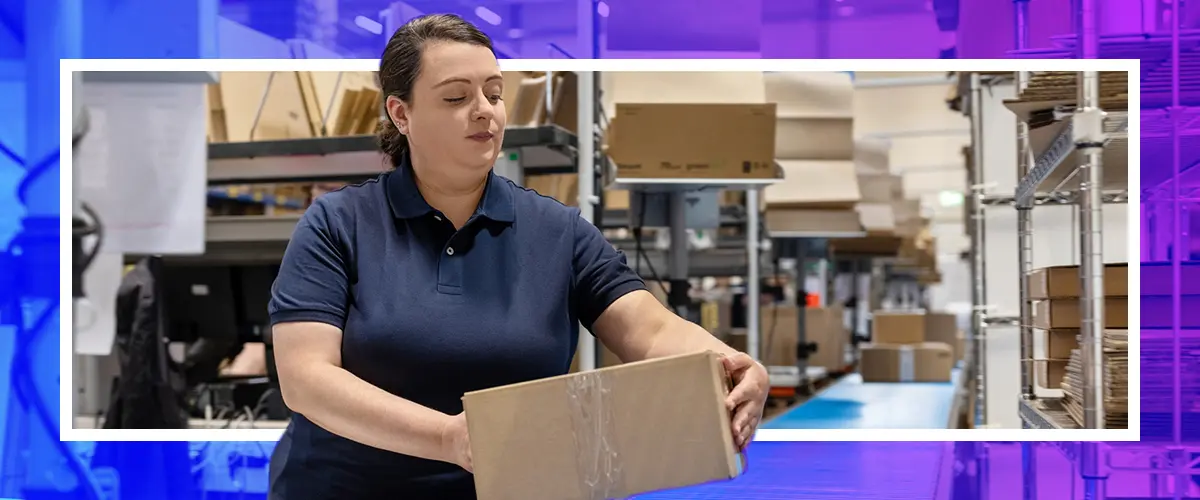For warehouse managers, this signals a rethinking of the fulfillment center workforce roles from the inside out. They’ll have to bring intuitive systems, AI-driven visibility, and mobile-first workflows on board to cater to this worker segment.
Traditional warehouse management systems (WMS) may struggle to keep pace with the expectations of Gen Z talent. However, the right tech stack can keep this group engaged and agile for the long term.
Key takeaways on the Gen Z workforce
- Gen Z is redefining warehouse expectations with its demand for intuitive and tech-forward environments.
- Outdated WMS platforms create friction, reduce engagement, and increase turnover among digital-native workers.
- AI-powered tools like Logiwa IO optimize workflows, reduce inefficiencies, support the Gen Z workforce, and improve job satisfaction across the board.
- Modernizing your fulfillment technology keeps you competitive in the labor market while catering to the younger workforce and staying technologically advanced to gain an edge in the industry.
The Gen Z workforce has arrived
A generational shift is underway inside the fulfillment center. As Gen Z steps into roles across warehouse floors and logistics networks, their influence is undeniable, especially since connectivity and intuitive tech are non-negotiables for them.
A digital-native generation enters the logistics workforce
In a survey studying knowledge of digital topics among generations, Gen Z performed better in every parameter compared to their older counterparts. The results aren’t a surprise, considering Gen Z was born into a world of smartphones and real-time everything. This digital immersion leads to different expectations in the workplace.
Gen Z in fulfillment centers expect intuitive technology to facilitate their work. They’re used to tapping, swiping, and getting instant feedback. If the tools they encounter on the job feel outdated, clunky, or inefficient, they’re likely to see it as inconvenient.
The high cost of outdated technology
Traditional WMS were built for a different era, and Gen Z can tell. These systems often use dated user interfaces and rigid workflows, which slows down operations. For a generation accustomed to modern, fast interfaces, this can lead to low engagement at work.
The technological gap further results in low employee retention in logistics and reduced fulfillment center productivity. More importantly, there’s a large gap between the workforce potential and operational experience.
Unlock a personalized tour of Logiwa IO
What Gen Z expects from warehouse technology
The younger fulfillment center workforce has some unique expectations from their employees. Let’s take a look.
Seamless and intuitive technology
Gen Z is used to advanced technology in their day-to-day lives, whether it’s social media or smart light switches or the digital assistants on their phones. So, they expect warehouse technology to be just as efficient and user-friendly.
If you consider the finding that Gen Z is the generation to be least enthusiastic about their workplace roles, it will become even more evident why meeting their needs is imperative for higher retention and productivity.
The Gen Z workforce wants their workplace tech systems to be easy to learn and onboard. It’s a win-win for both warehouse managers and workers since quick onboarding reduces training time and improves productivity.
Logiwa IO, a modern fulfillment management system, addresses this by delivering a user experience designed to feel familiar and frictionless. Its user-centric design makes warehouse tasks feel less effortless, which is just what Gen Z wants.
A desire for efficiency and purpose
A Deloitte survey revealed that 89% of Gen Z workers believe that a sense of purpose is important to their job satisfaction. The younger fulfillment center workforce wants their work to matter.
But when fulfillment processes are disjointed or physically inefficient, like navigating poor warehouse layouts or using outdated picking methods, engagement drops. For example, past research shows that 50% of an order picker’s time is spent walking, and the picking process represents nearly 60% of the cost of warehouse operation.
However, Gen Z won’t be fond of these same processes. Rather, they’d appreciate AI-powered optimization. When routes are dynamically adjusted, workloads are intelligently balanced, and bottlenecks are predicted before they occur, employees experience fewer frustrations and more meaningful progress.
Opportunities for growth and recognition
The Gen Z workforce is not content to clock in and clock out. Instead, they want to know where they’re headed. Career advancement, skill development, and recognition are key factors in their employment decisions. However, traditional performance metrics often fail to reflect the full picture of a worker’s contributions.
Instead of tracking only “units per hour,” fulfillment centers can embrace more holistic performance models. For example, micro-activity tracking breaks down tasks into smaller actions, like walking time, scan accuracy, and error resolution, to provide a clearer view of efficiency. Optimizing warehouse efficiency by analyzing these patterns to spot bottlenecks and offer real-time feedback for continuous improvement helps attract and retain workers.
How Logiwa IO drives fulfillment center productivity
Let’s discuss how Logiwa IO’s modern framework supports the Gen Z fulfillment center workforce.
Built for the next generation of workers
Logiwa IO combines powerful functionality with a sleek, user-friendly interface that mirrors the digital experiences Gen Z already knows and trusts. From the very first login, new employees can navigate tasks confidently.
The platform’s user-centric design reduces onboarding time and supports a smooth ramp-up for seasonal and high-turnover roles so workers feel capable and connected from day one.
Driving efficiency and job satisfaction
What sets Logiwa IO apart is its ability to empower teams to do more with less friction. Its AI-driven engine dynamically optimizes picking routes, order batching, and task assignments to eliminate wasted motion and repetitive work.
As a result, it reduces physical strain and leads to higher job satisfaction. Workplace operations also become more efficient. In a recent report, the Ultimate Guide to AI in Fulfillment Centers, a warehouse using Logiwa IO saw labor hours drop by almost 40% and a leap in items picked per hour from 56 to 93, which was a clear win for both productivity and morale.
Become a modern fulfillment center or be left behind
Going forward, fulfillment centers have a choice to make: to modernize or not?
The competitive advantage of a modernized workforce
Fulfillment centers that evolve to meet the Gen Z workforce’s expectations will experience better retention and productivity. They’ll also gain a strategic edge through streamlined workflows, a motivated team, and faster onboarding.
Taking the next step
Logiwa IO’s fulfillment management system is the step forward for this workforce transformation. With Logiwa, you can create an efficient environment for your Gen Z fulfillment center workforce to drive performance and satisfaction at scale.
Ready to see how Logiwa IO can future-proof your operation? Schedule a demo to speak with a Logiwa expert and explore your options for next-gen fulfillment.





